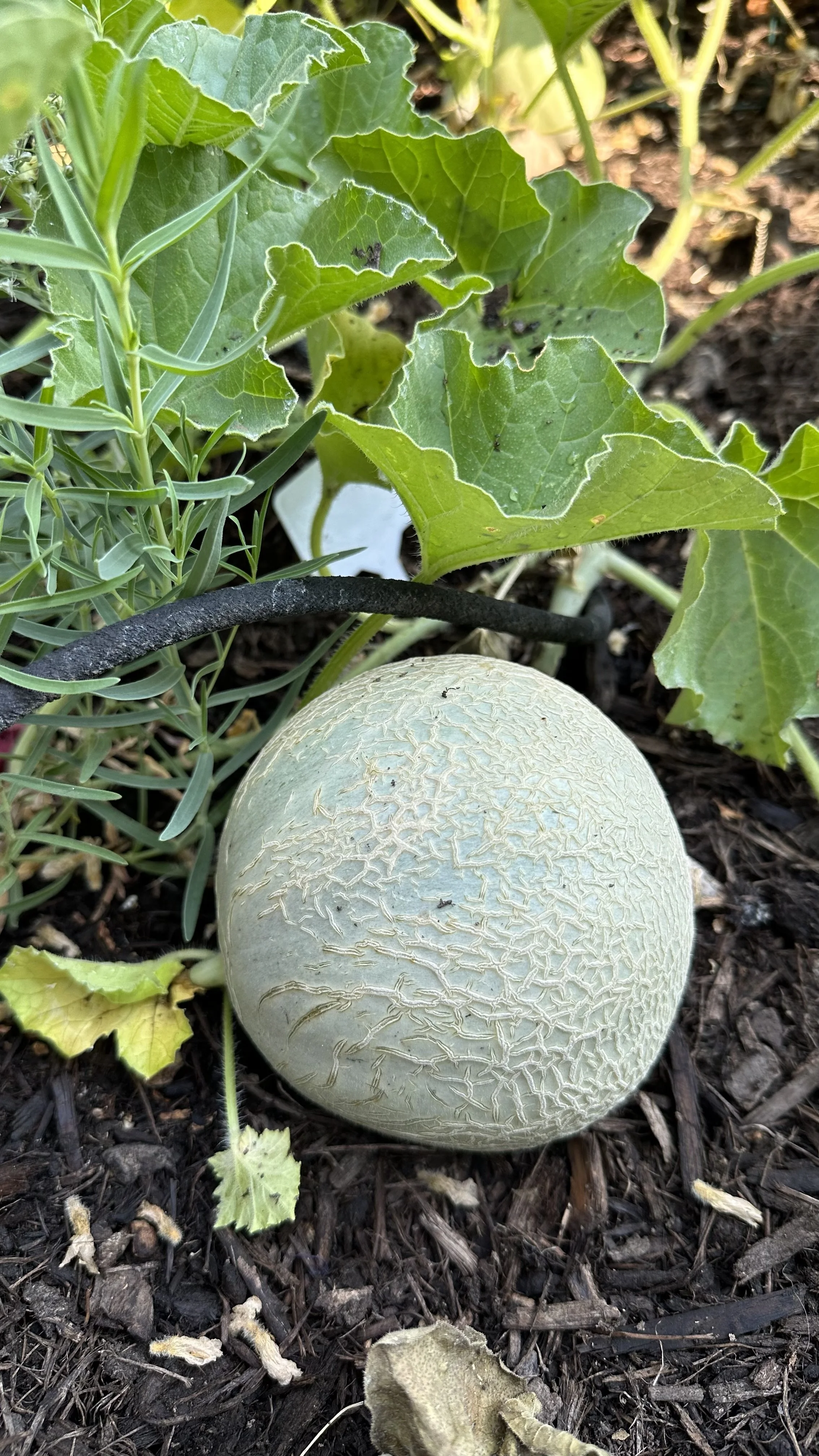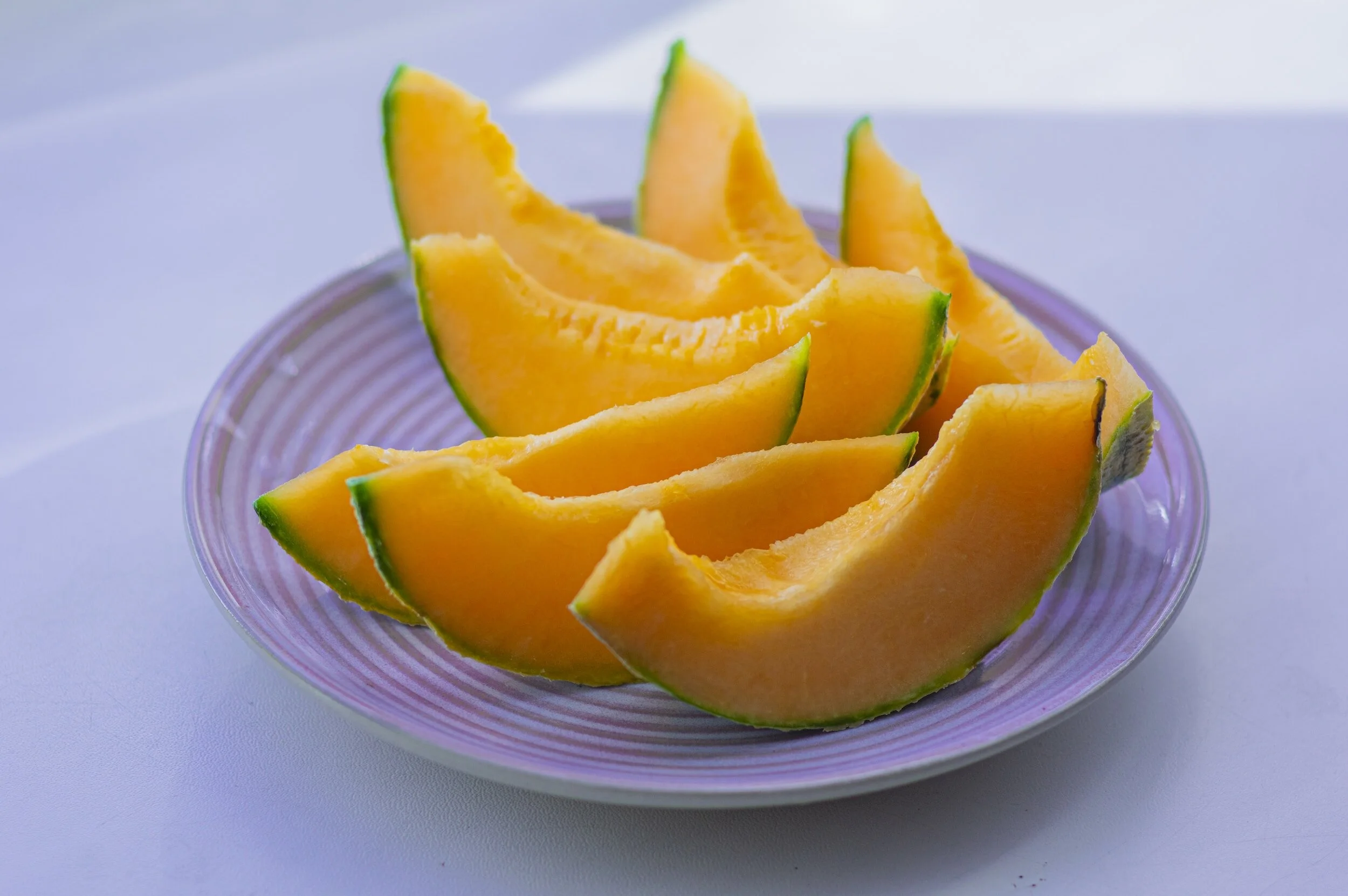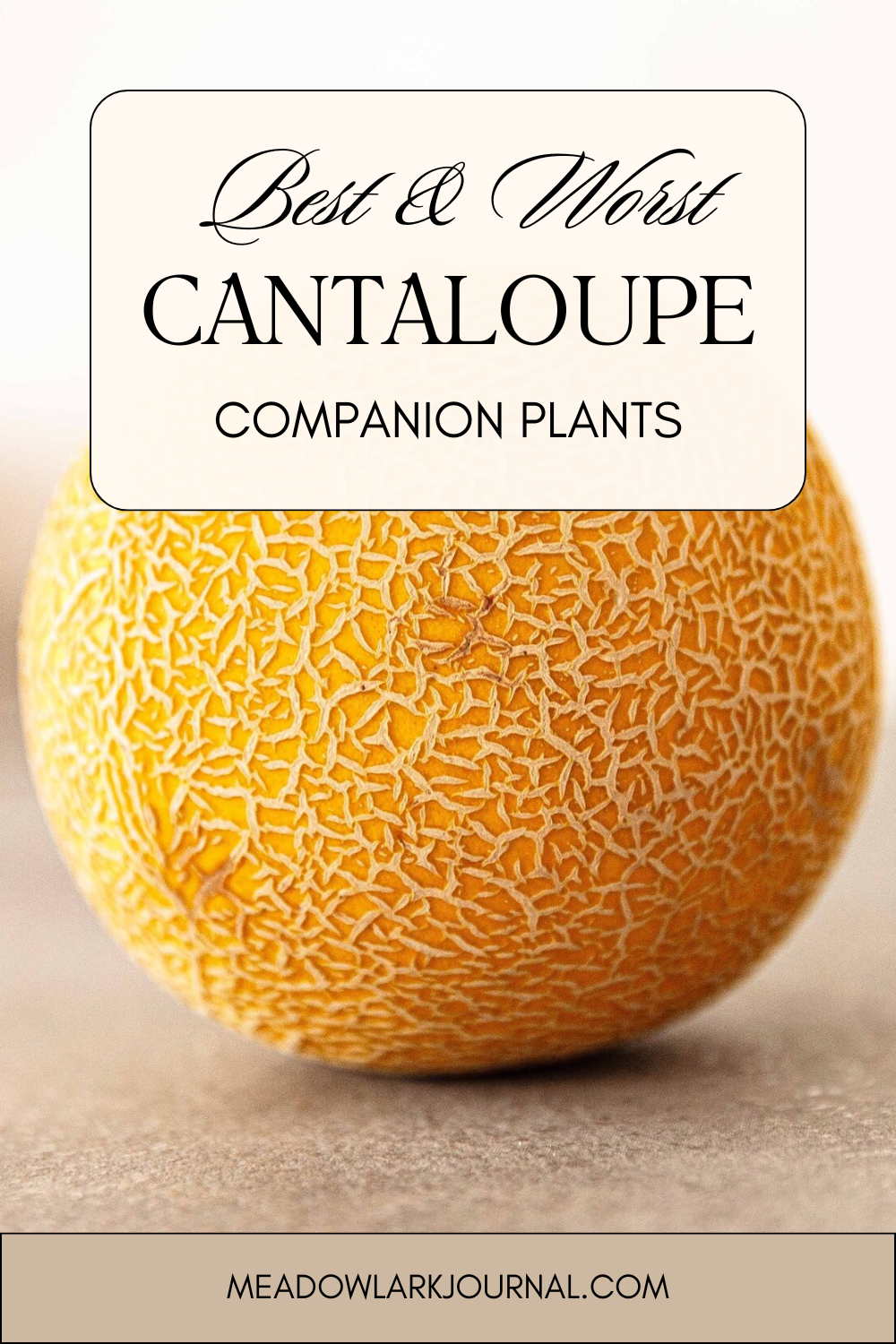The Best and Worst Cantaloupe Companion Plants
This website is reader-supported - thank you! This post may contain affiliate links. As an Amazon Associate, I earn from qualifying purchases at no extra cost to you.
Cantaloupes, known for their sweet, juicy fruits, are a beloved staple in many summer gardens.
But did you know that the success of your cantaloupe harvest can be significantly enhanced by the company they keep?
Welcome to the world of cantaloupe companion planting.
Whether you're a seasoned gardener or a beginner with a newfound passion for growing, understanding the art of companion planting can transform your gardening experience.
In this guide, we delve into the synergistic relationships between cantaloupes and their ideal companion plants.
We'll explore how the right plant neighbors can not only improve your cantaloupes' growth but also help in pest control, soil enrichment, and efficient use of garden space.
Conversely, we'll also shed light on which plants to avoid placing near your cantaloupes to prevent competition, pest infestations, and disease spread.
From the nitrogen-fixing prowess of bush beans to the pest-repelling qualities of marigolds, each companion plant plays a unique role in nurturing your cantaloupe vines.
Our guide is designed to equip you with the knowledge and tips needed to create a thriving, harmonious garden ecosystem where your cantaloupes can flourish alongside their companions.
So, let's embark on this green journey and unlock the secrets of companion planting for a bountiful cantaloupe harvest.
To learn more about companion planting, check out my guides:
Companion Planting with Peas: Maximizing Your Garden's Potential
The Best Companions for Cantaloupes
Selecting the right companion plants for cantaloupes can significantly improve the health and yield of your melon patch.
Here's a detailed look at some of the best companions for cantaloupes and the benefits they bring.
Beans (Bush Varieties)
Nitrogen Enrichment:
Bush beans are known for their ability to fix nitrogen in the soil, a process that naturally enriches the soil with this essential nutrient.
Cantaloupes, being heavy feeders, benefit greatly from the increased nitrogen levels, leading to healthier growth and better fruiting.
Mutual Benefits:
Planting bush beans near cantaloupes can also benefit the beans, as the leafy growth of cantaloupes provides some shade, helping to keep the soil moist and cool, which beans prefer.
Here are my favorite bush bean seeds:
Collard Greens
Complementary Growth Habits:
The upright growth habit of collard greens contrasts with the sprawling nature of cantaloupe vines, allowing them to coexist without competing for space.
This makes collard greens an excellent choice for maximizing garden space.
Soil Health and Pest Deterrence:
The robust nature of collard greens can help improve soil structure.
Additionally, their presence might help deter certain pests that could otherwise affect cantaloupes.
Here are my favorite collard green seeds:
Marigolds
Natural Pest Repellent:
Marigolds are well-known for their ability to repel nematodes and other soil-borne pests.
Planting marigolds around your cantaloupe patch can create a protective barrier, reducing the likelihood of pest infestations.
Check out my guide: How to Pair Marigold Companion Plants.
Aesthetic and Biodiversity:
The vibrant colors of marigolds add aesthetic value to your garden and increase biodiversity, which is beneficial for a healthy ecosystem.
Here are my favorite marigold seeds:
Bee Balm and Other Pollinator-Friendly Plants
Attracting Pollinators:
Cantaloupes depend on pollinators like bees for fruit set.
Planting bee balm and other flowering plants that attract pollinators can significantly increase the number of bees visiting your garden, thus enhancing the pollination of cantaloupe flowers.
Biodiversity and Ecosystem Balance:
These plants not only attract pollinators but also beneficial predatory insects that help keep pest populations in check, contributing to a balanced garden ecosystem.
Here are my favorite bee balm seeds:
Companion Plants to Avoid Near Cantaloupes
While companion planting is a powerful technique in gardening, it's equally important to know which plants should be kept away from cantaloupes.
Certain plants can adversely affect the growth and health of cantaloupes due to competition for resources, shared pests, or disease issues.
Potatoes
Nutrient Competition and Disease Risk:
Potatoes are heavy feeders and compete aggressively for nutrients in the soil, which can deprive cantaloupes of essential nourishment.
Moreover, potatoes are susceptible to blight and other diseases that can easily spread to cantaloupe plants.
Space Constraints:
Potatoes, with their underground growth, require significant space for root expansion.
This can interfere with the root systems of cantaloupes, restricting their growth.
To learn more about growing potatoes, check out my guide The Best Potatoes to Grow in Bags.
Cucumbers and Squash
Shared Pests:
Cucumbers and squash share common pests with cantaloupes, such as cucumber beetles and squash bugs.
Planting these crops in close proximity can lead to higher pest populations and increased damage to all plants involved.
Disease Transmission:
These plants are also prone to similar diseases like powdery mildew, which can quickly spread from one plant to another when they are planted too close together.
Want to learn more about companion planting? Check out my guides:
Companion Planting Tips
Incorporating Companion Plants Effectively
Implementing companion planting requires thoughtful planning.
Consider the following:
Spatial Arrangement:
Plant cantaloupes in proximity to their companions, ensuring each has enough space to grow without overcrowding.
Timing:
Plant companion plants at the right time in relation to cantaloupes.
Some companions might need to be planted earlier or later, depending on their growth cycle.
Monitoring and Maintenance:
Regularly observe plant interactions.
Some companions might become too dominant or attract unwanted pests, requiring adjustments in your garden layout.
Observation and Adjustment:
Be observant and ready to make adjustments.
If a companion plant is not thriving or negatively affecting your cantaloupes, consider relocating or replacing it with a more suitable option.
Other Considerations
Water and Nutrient Needs:
It's essential to consider the water and nutrient requirements of neighboring plants.
Plants with vastly different needs can negatively impact the overall health of the garden.
Root Competition:
Some plants have invasive root systems that can encroach on the root space of cantaloupes, impeding their growth and nutrient uptake.
Shade and Sunlight:
Avoid planting tall or dense plants near cantaloupes that could block sunlight, as cantaloupes require full sun to produce the best fruit.
Strategies for Garden Planning
Research and Planning:
Before planting, research the specific needs and characteristics of potential companion plants.
Planning your garden layout with these factors in mind can prevent issues later in the season.
Rotation and Diversity:
Practice crop rotation and diversify your plant selections each year to prevent soil nutrient depletion and to reduce pest and disease buildup.
By understanding these dynamics, gardeners can create a harmonious and productive cantaloupe patch, harnessing the benefits of companion planting for a bountiful harvest.
Maximizing Garden Space and Health
Creating a thriving cantaloupe patch requires more than just planting the right companions.
It involves strategic use of garden space and maintaining plant health.
This section provides tips on optimizing space and ensuring the health of your cantaloupe garden.
Efficient Use of Space in the Garden
Intercropping:
Planting quick-growing, short-lived plants like radishes or lettuce among cantaloupes can maximize garden productivity.
These plants mature and can be harvested before cantaloupes need the extra space.
Spacing for Health:
While cantaloupes need room to spread, too much space can be wasteful.
Follow recommended spacing guidelines to ensure each plant receives enough sunlight and air circulation, reducing the risk of fungal diseases.
Vertical Gardening:
Cantaloupe vines can take up considerable ground space.
Consider training them on trellises or supports.
This vertical approach not only saves space but also helps in preventing fruit rot and facilitates easier harvesting.
Here is the trellis I recommend:
Soil Health and Fertility
Organic Matter:
Enriching the soil with compost or well-rotted manure provides cantaloupes with necessary nutrients.
This practice also improves soil structure and water retention, benefiting the entire garden.
Mulching:
Applying a layer of organic mulch around cantaloupes and companion plants helps conserve moisture, regulate soil temperature, and suppress weeds.
Check out my guide: The Best Alternatives to Traditional Mulch for Your Garden.
Regular Soil Testing:
Conduct soil tests periodically to monitor nutrient levels and pH.
This information helps in customizing your fertilization strategy, ensuring your cantaloupes and companion plants get exactly what they need.
Here is the soil pH tester I recommend:
Integrated Pest Management (IPM)
Regular Monitoring:
Regularly inspect your cantaloupe plants and companions for signs of pests or diseases.
Early detection is key to managing potential problems.
Natural Predators:
Encourage beneficial insects like ladybugs and lacewings, which prey on common pests like aphids and cucumber beetles.
Planting flowers like Santa Barbara Daisy and Geums that attract these insects can be highly beneficial.
Non-toxic Remedies:
Before resorting to chemical pesticides, try natural remedies like neem oil or insecticidal soaps.
These are less harmful to the environment and beneficial insects.
Here is the neem oil I recommend:
Water Management
Drip Irrigation:
Implementing a drip irrigation system can provide consistent and targeted watering, reducing water waste and preventing leaf diseases caused by overhead watering.
Here is the drip irrigation system I recommend using:
Watering Schedule:
Cantaloupes prefer deep, infrequent watering, which encourages strong root growth.
Adjust your watering schedule based on weather conditions and soil moisture levels.
For more watering tips, check out my guide How to Use Watering Globes.
By implementing these strategies, gardeners can make the most out of their garden space and maintain the health of their cantaloupe plants and companions.
A well-planned garden not only looks great but also yields a more abundant and healthier harvest.
FAQs: Cantaloupe Companion Planting
What are the best companion plants for cantaloupe?
Bush beans, collard greens, and bee balm are among the best companions for cantaloupe, providing soil enrichment and attracting beneficial insects.
Can I plant cucumbers near cantaloupes?
It's advisable to avoid planting cucumbers near cantaloupes due to shared pests like cucumber beetles.
How can companion planting help in pest control?
Companion plants like marigolds can deter pests naturally, reducing the need for chemical pest control methods.
What spacing should I maintain when planting cantaloupe?
Cantaloupes need ample space for their vines to spread, so maintain a good distance between plants to ensure healthy growth.
Wrap-up
As we reach the end of our journey through the world of cantaloupe companion planting, it's clear that the secret to a thriving garden lies in understanding and respecting the relationships between different plants.
By thoughtfully pairing your cantaloupes with the right companions, you can create a symbiotic environment that enhances growth, wards off pests, and brings out the best in your garden.
Remember, companion planting is as much an art as it is a science. It encourages us to observe, experiment, and learn from nature's intricate patterns.
Whether it's the nitrogen-enriching bush beans, the protective marigolds, or the pollinator-attracting bee balm, each plant contributes uniquely to the health and productivity of your cantaloupe patch.
But the benefits of companion planting extend beyond just better yields and pest control.
This approach fosters a diverse ecosystem in your garden, inviting beneficial insects and promoting a natural balance that resonates with the principles of sustainable gardening.
As you implement these companion planting strategies, keep in mind that every garden is unique.
Be open to making adjustments based on your observations and experiences.
Embrace the joys and challenges that come with gardening, and let your cantaloupe adventure be a rewarding and learning-filled experience.
Pin this post to save it for later:














































